
The monstrous event of the Australian bushfires has been devastating for both humans and animals. In addition to the catastrophic impact on life and human health, the fires have also left an estimated 1.25 billion animals dead and more summer months ahead to come hundreds of thousands more will possibly perish as a result of these killer bushfires.
Australians are doubtful that wildlife will fully recover, and many have expressed concern for the already endangered species being at greater risk of extinction.
1. Estimating the numbers

Examining and analyzing the numbers of animals dying in the fires to determine the impact exactly how much wildlife has been lost, can be like the impacts of land clearing.
The numbers include mammals, birds, reptiles, frogs, insects and all other invertebrates. For some species there were only 2,000 or so of them left before the fires so these groups’ existence will be greatly impacted.

Other animals have not been burned alive but have faced death due to the destruction of their natural environment, which they rely on for food, water and shelter.

Harrowing scenes of kangaroos fleeing walls of fire and charred bodies of koalas are horrifying. Koalas have been among the hardest hit because they are slow moving and are in eucalyptus trees which are filled with oil and highly flammable.
2. Hastening Extinction

The number of animals which have died in Australia’s unprecedented bushfires is estimated to be over one billion. As the fires continue to rage sadly the animals perishing in their path is continuing and hastening extinction.
It is known that Australian biodiversity has been decreasing steadily over a span of decades and Australia has got the world’s highest rate of extinction of mammals. In Australia around 34 species and subspecies of native mammals have become extinct over the last 200 years, the highest decline for any region in the world.

Sadly, the bushfire crisis not only may well hasten the extinction process for a range of other native animal species but for endangered fauna as well.
In addition to the iconic koala bear, other impacted animals will be the Nabarlek, Bilby, Gouldian Finch, Numbat, Northern Bettong and Wiliji.
3. Euthanizing

Both native wildlife and agricultural livestock are among the fatalities of the killer bushfires. Animals are so severely burned that there is nothing you can do for them, so it is better to end their suffering.
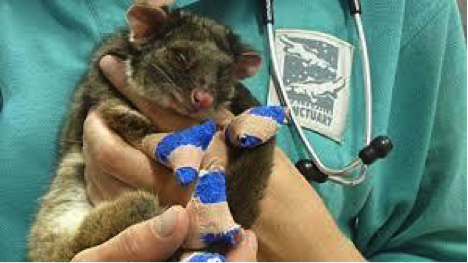
Vets are having to euthanize the animals that are suffering and too badly burnt to be saved. Many of the animals have already passed away as a result of the depletion of food and shelter and from the predation of feral cats or red foxes. Animals will die from starvation and heat stress as they strive to find food, water and shelter in what is left of their destroyed habitat.
4. Wildlife Rescue Groups

Many zoos in Australia have skilled staff who can go out and assist the effort to rescue animals. Many have been co-opted in the emergency effort and are on the front line of saving affected animals. Zoo veterinary staff members are making a real difference and have been given permission in some states to go into fire zones in order to treat koalas and wildlife.
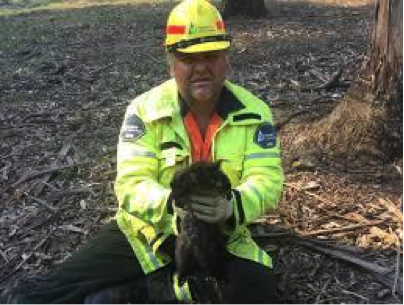
The ongoing threat of bushfires is not over, and it is a hard fact to swallow, that sadly some wildlife rescue groups are likely to be helpless in many instances.
5. Australian Army mobilized

As the focus moves from evacuations to the recovery effort, army reservists and specialist personnel including engineers, medics, and vets have been sent to the bushfire zones to help state agencies.
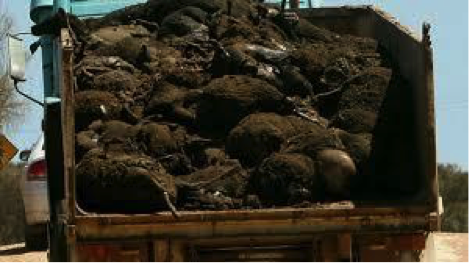
One of their tasks will be to bury thousands of animals killed in the bushfires. To deal with the carcasses in an appropriate way, pits will be dug to dispose of the dead sheep and cattle providing there is safe access to do so.
6. National Bushfire Recovery Agency

The Prime Minister has set up a national bushfire recovery agency led by a former Australian federal police commissioner Andrew Colvin. Farmers, residents as well as small business owners who have been affected by the fires will be offered income support and the agency will give urgent priority particularly to farmers who have lost stock.
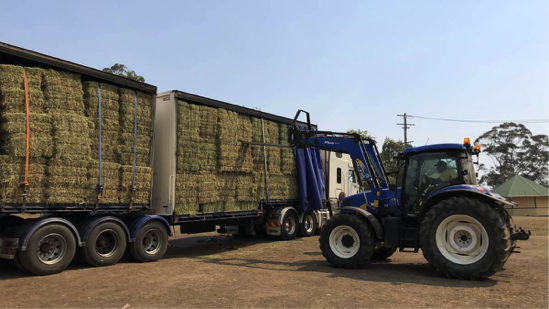
Fodder and water are being distributed to surviving livestock while fencing and other farm infrastructure is repaired. Reconstructing roads, bridges and critical infrastructure destroyed by the blazes is expected to cost hundreds of millions of dollars. Rebuilding lives will be a lot harder.
7. Food Drops to save endangered animals
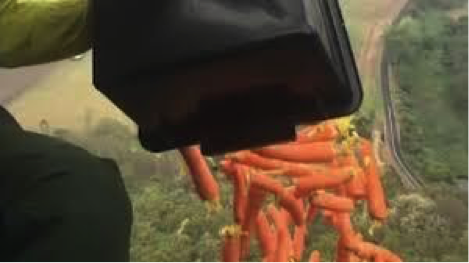
Native animals were already under stress from the ongoing drought making survival challenging for them even before the bushfires. These massive fires have ravaged their habitat and those animals that have survived have been left stranded and starving.
Just one move to support the recovery of endangered species affected by the Australian bushfires, the New South Wales government are carrying out a mission known as Operation Rock Wallaby. This recovery effort is dropping sweet potatoes and carrots across different colonies of brush-tailed rock wallaby populations. The plan is to help maintain the animal colonies and allow them to recover.
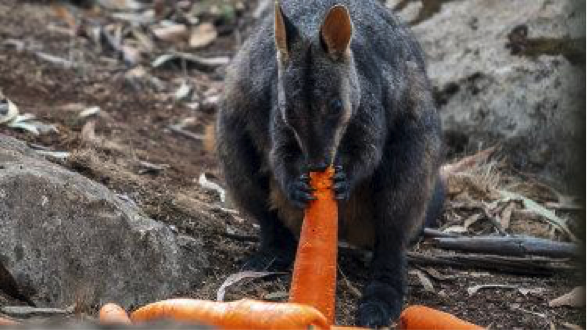
Wallabies are known to survive the fires but are left with a limited natural food as the fires consume the vegetation around their rocky habitat. The government plans to continue to provide additional supplies to wallabies as well as a thorough feral predator control until their habitat has regenerated enough to provide them with food and water.
8. Koala deaths
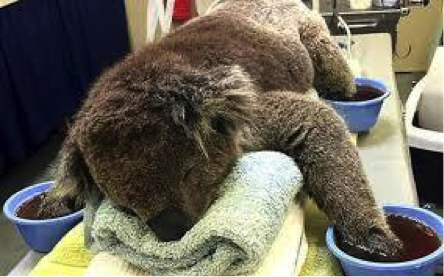
Koalas have been around for the same length of time as the first Australians, possibly longer and have been an icon which people value. The estimated deaths of more than half of the koala population, have left the country fearful that this may lead to eventual extinction, leaving approximately only 25,000 koalas that have survived.
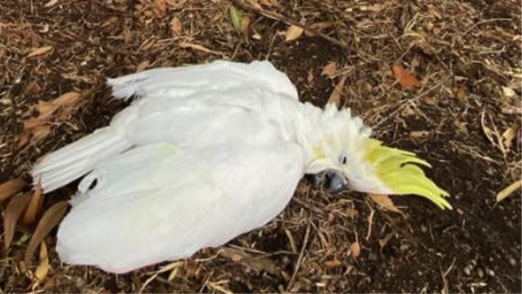
The fire has also killed other iconic species like kangaroos, gliders, cockatoos and honey eaters. Struggling through the intense heat and bushfire conditions, cockatoos have been falling dead from trees.
Roads are likely to be shut for weeks so small planes leased by public donations have been filled with bags of grain and pellets to give out to wildlife through Vets for Compassion. They are trying to ensure the surviving wildlife do not die from lack of food.
9. Fire Seasons in Australia
There is nothing to compare the devastation that is happening over such a large area so swiftly and in terms of the number of individual animals affected so quickly.
Fire seasons regularly take place in the Australian summer. The country has experienced one of the hottest and driest years ever recorded. Consequently, these dry and hot conditions have added to the fires. They have been unstoppable in some circumstances and aided by the most severe droughts in Australia’s recent history.
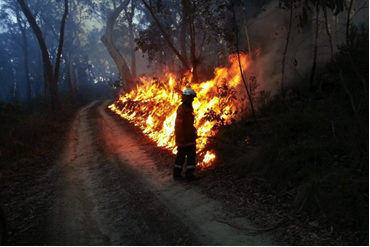
As well as the dryness of the vegetation, the lack of controlled hazard reduction burns, to diminish the risk of fire, has been neglected in order to meet carbon emission expectations. This has led to excess vegetation building up on the ground accelerating the risk of an out of control bushfire.
The Indian Ocean dipole, which is a variation in of the Indian Ocean’s sea surface temperature, drives weather patterns. This dipole has been in its greatest positive phase for more than 20 years, resulting in cooler sea surface temperatures near Australia and therefore less storm action and less rain. The lack of rain in conjunction with climate change and strong winds elevate the risk.
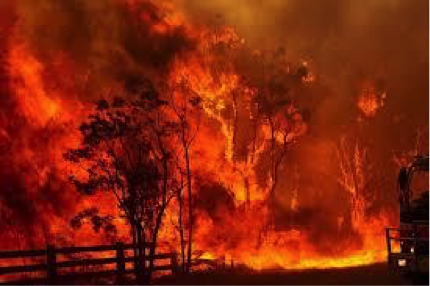
Australia bushland has many native eucalyptus trees and these natural tree oils fuel fireballs causing explosions accelerating the spread of the fire.
10. Animal Rescue Shelters
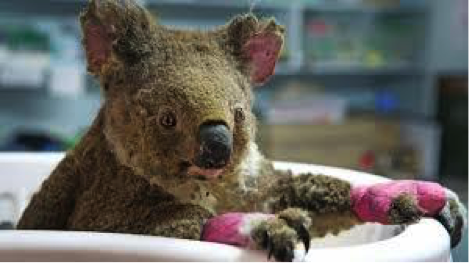
As the bushfires rage, animal rescue shelters are being inundated with injured native wildlife brought to them by members of the public and rescue teams, who have been scouring the fire ground desperately searching for koalas and injured wildlife.
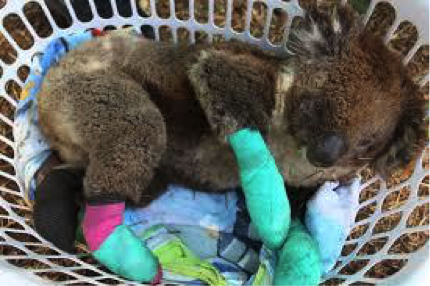
While some koalas are found unharmed, they are now homeless others are severely burned. These koalas are no longer a soft grey but now a coarse brown with their fur singed with the heat of the blaze. Their paws are burnt black from climbing down smouldering trees. The shock and trauma of their injuries make them submissive to being handled and they generally allow staff to apply burn creams and bandages which need to be changed every couple of days when the animal then must be mildly sedated.
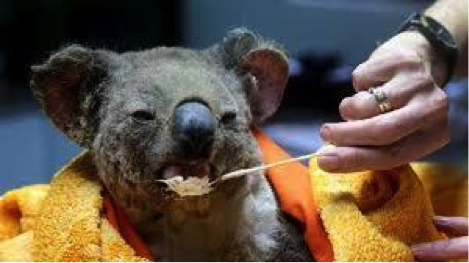
Some are so severely dehydrated they need to be given fluids for the first 24 hours. The koalas are then placed in laundry baskets (some shelters have playpens), filled with towels to support them. Eucalyptus branches are given for food and to provide a sense of shelter and comfort. Some of course must be fed by hand as their paws are injured. Healthy homeless koalas are placed in secure enclosures to recover.
